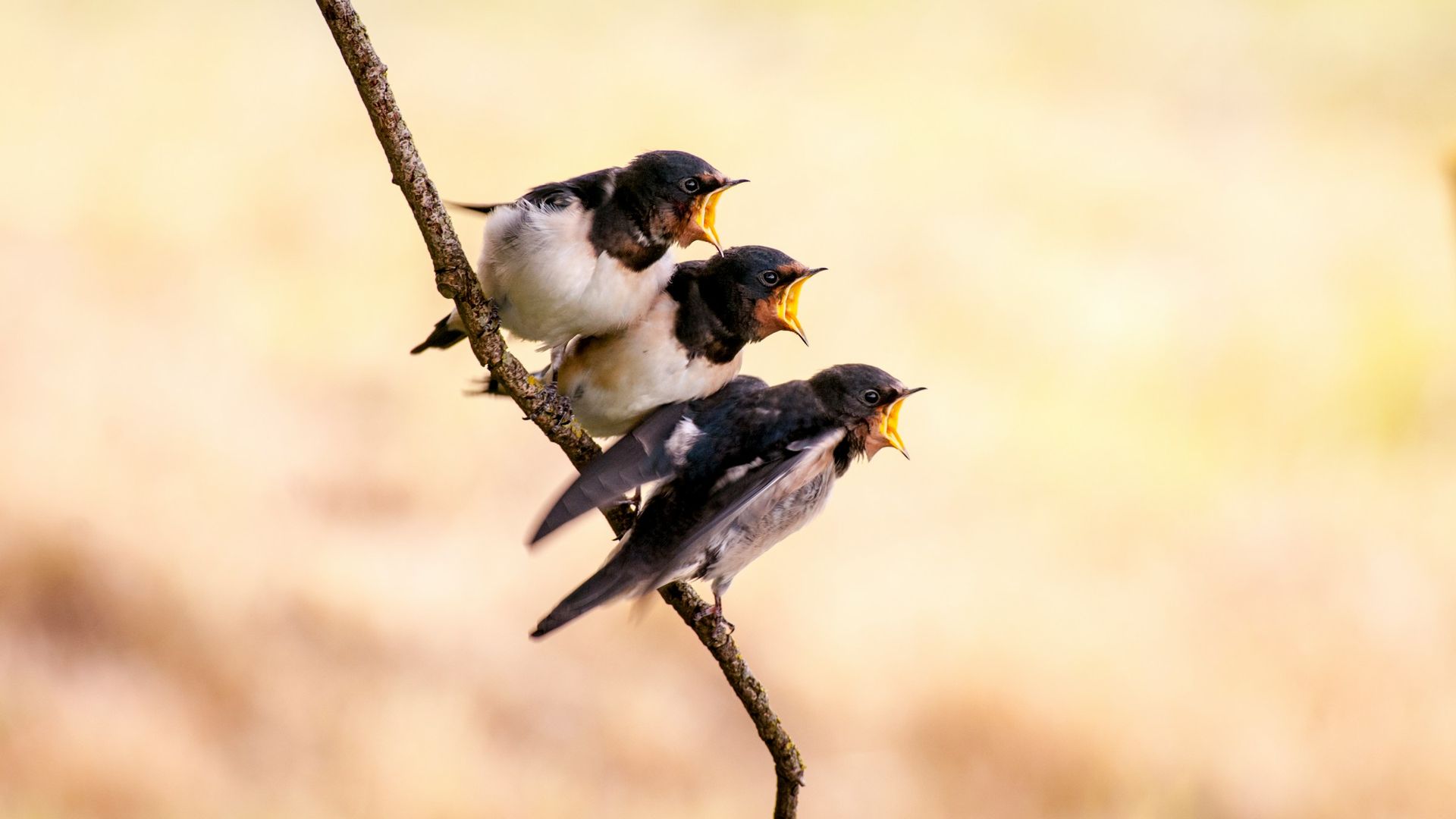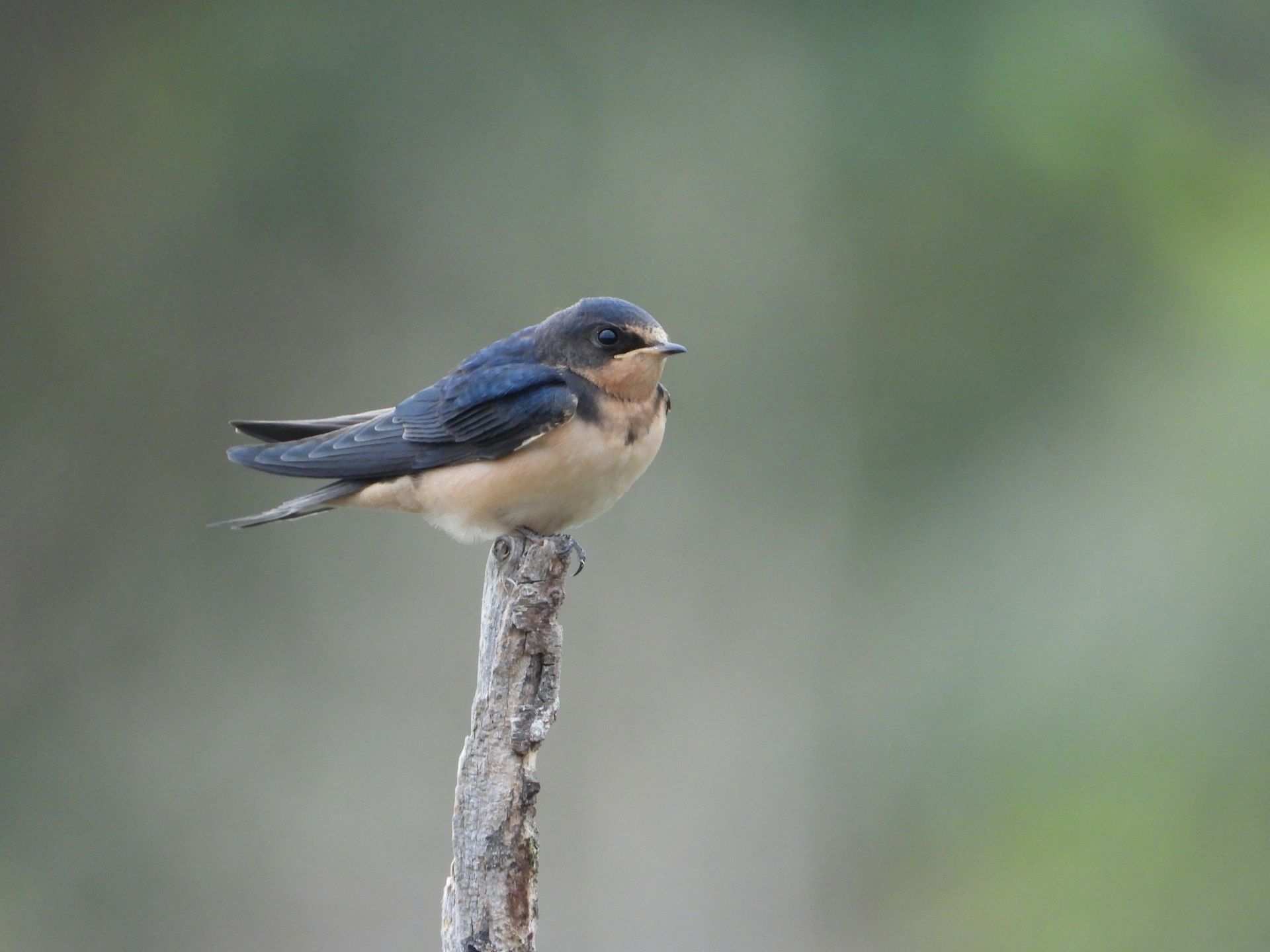Swallows are small, graceful songbirds known for their acrobatic flight and long-distance migrations. Found on every continent except Antarctica, swallows thrive in open habitats such as fields, wetlands, and urban areas. They play a crucial role in ecosystems by controlling insect populations, especially flying insects like mosquitoes and flies.
Swallows typically measure 5-7 inches in length with a wingspan of 11-13 inches. Their slender bodies, pointed wings, and forked tails make them highly efficient fliers. Common species include the Barn Swallow (Hirundo rustica) and the Cliff Swallow (Petrochelidon pyrrhonota). As aerial insectivores, Swallows feed almost exclusively on flying insects, which they catch mid-air with impressive precision.
During the breeding season, swallows build cup-shaped nests out of mud and plant material, often attaching them to buildings, bridges, and cliffs. Females lay 3-5 eggs per clutch, and both parents participate in feeding the chicks. Swallows are highly social birds and often nest in colonies.
Natural predators of swallows include hawks, falcons, and snakes. Human-related threats such as habitat loss, pesticide use, and climate change also impact swallow populations. Despite these challenges, many swallow species have adapted well to human-altered landscapes.

For your safety and the well-being of wildlife, please observe animals from a distance and avoid touching or disturbing them. If you encounter an animal that appears injured or in distress, contact a licensed wildlife rescue organization for guidance before intervening.
Found An Animal? Not sure how to help a wild animal in need? Learn when to step in, who to call, and how to help safely.
Did You Know?
- Barn Swallows are the most widespread swallow species in the world.
- They are insectivores and fly in complex aerial patterns to catch their prey. When a cliff swallow finds food away from its bird colony, it will give off a specific call to alert other swallows of the food source!
- They use mud and saliva to build their nests, which can last for several breeding seasons.
- Swallows are capable of flying over 6,000 miles during their annual migrations.
- Cliff Swallows form large colonies, with some nesting sites containing thousands of birds.
- Swallows drink water on the wing by skimming over the surface of ponds and rivers.
- They can reach speeds of up to 35 miles per hour while foraging.
- Swallow parents take turns feeding their chicks, sometimes making hundreds of trips per day.
- Swallows have been associated with good luck and safe travels in many cultures.
Problems Faced In The Wild
- Habitat Loss: Urban development reduces nesting and foraging areas.
- Pesticide Use: Chemicals reduce insect populations, which are a primary food source.
- Climate Change: Altered weather patterns affect migration timing and food availability.
- Human Disturbance: Recreational activities can disrupt swallow colonies during breeding.
- Predation: Eggs and chicks are vulnerable to predators such as snakes and larger birds.
- Loss of Nesting Sites: Modern building designs often lack the ledges swallows need for nesting.
Tips For Cohabitation
- Provide Nesting Platforms: Install swallow nest cups or leave natural ledges for nesting.
- Avoid Pesticides: Use eco-friendly pest control methods to protect insect populations.
- Protect Existing Nests: Avoid disturbing swallow nests during the breeding season.
- Create Water Sources: Provide fresh water for swallows to drink and collect mud for their nests.
- Educate Others: Share the benefits of swallows in controlling pests and supporting healthy ecosystems.
- Support Conservation Efforts: Participate in programs that protect swallow habitats.



